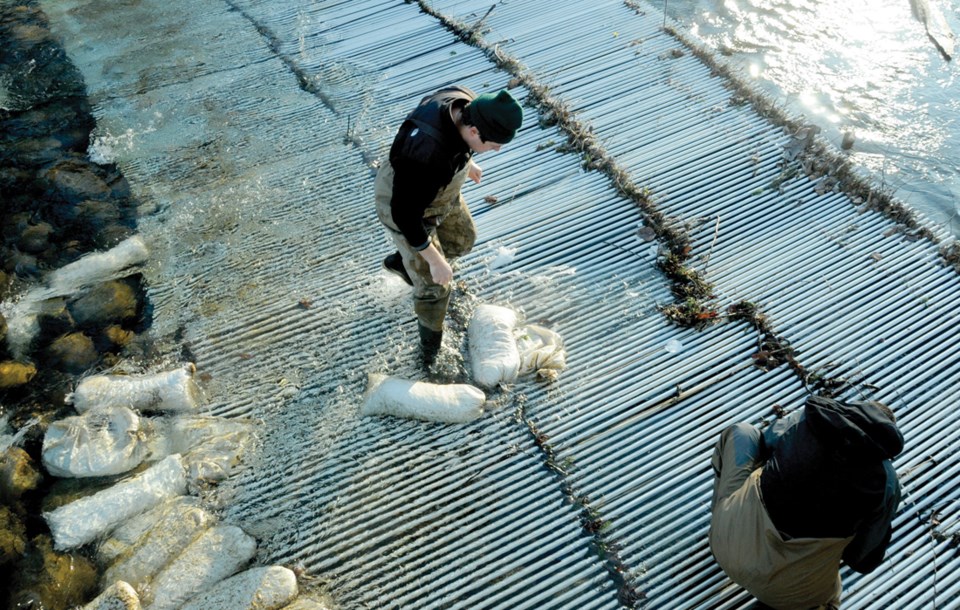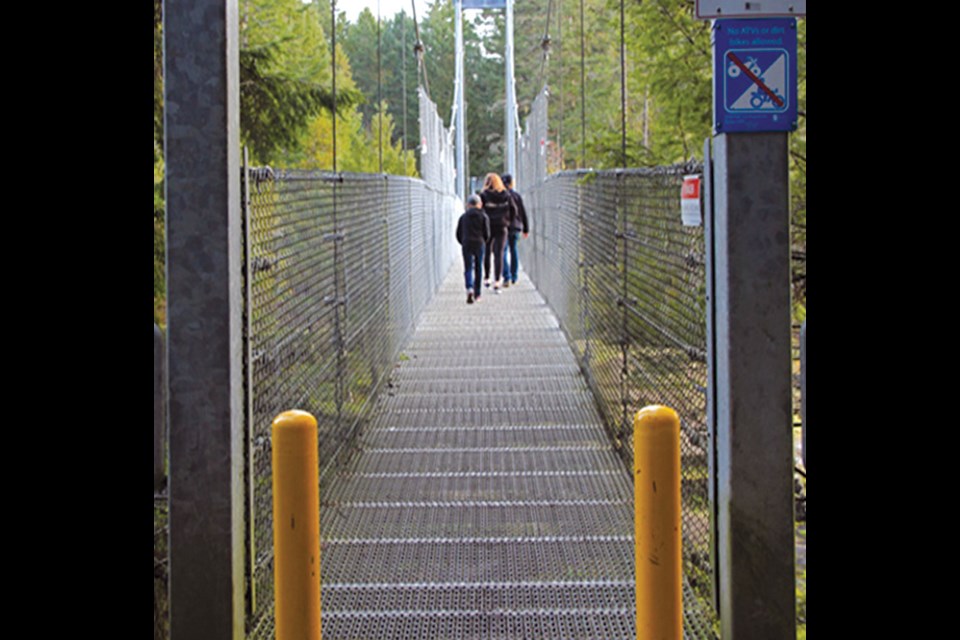Metro Vancouver is moving ahead with plans to replace the Twin Bridge in the Lower Seymour Conservation Reserve.
The original bridge was a casualty of the December 2014 rock slide that sent 50,000 cubic metres of rock into the Seymour River, creating a new pond and washing out the Twin Bridge.
The new span, which will be dubbed the Fisherman’s Trail Bridge, will be a 75-metre-long, 2.5-metre-wide rigid suspension bridge designed for people on foot, bicycle and horseback. It will be placed about 100 metres downstream from the old one.
“This has been an important part of North Shore residents’ lives. It provides a really good connection across the Seymour River to give that linear access right across the North Shore,” said Mike Mayers, superintendent of environmental management for Metro Vancouver. “I think staff are just as excited as the public to get this reconnection and to re-establish some very old, historic recreational routes for people.”
The first recreational bridge over the Seymour was built in 1908. A second one was added in 1926, hence the familiar name Twin Bridges. The most recent iteration was built in 2008. Its concrete pilings will remain in place.
As part of the $2.3-million project, crews will have to reroute some of the Bottletop and Fisherman’s trails that were lost or damaged by the rising waters.
The design of the bridge was partly shaped by consultations through two meetings held with the public and trail users groups with one of the main criteria being that the new structure not be too imposing like a highway bridge.
“We collected feedback at both of those meetings. What we heard was very favourable,” Mayers said.
Metro will also replace the existing footbridge at the top of Riverside Drive with a vehicle bridge for staff to access water infrastructure and do trail maintenance.
The project is in the detailed design phase with construction expected to start this summer. Mayers said he is hoping to see both new bridges in service by the end of 2017.
Trail users are warmly welcoming the update from Metro Vancouver.
“It’s fantastic news. Having no access between Lynn Valley and basically Rice Lake made people drive around. It contributed to more traffic. People can leave from Lynn Valley, go across and access all the trails. It adds connectivity. It makes the trail network whole again,” said Vince Beasse, vice-president of the North Shore Mountain Bike Association.
Eric Godot Andersen, chairman of the Blueridge Community Association, said people in his neighbourhood, many of whom used it multiple times a week, are thrilled at the thought of having the bridge back.
“I know for a fact this is something people have been waiting for, for a very, very long time – since that bridge had to be taken down,” he said. “Everybody has been missing it so much.
“I think, when you don’t have it, you realize how much it means to you.”
While trail users are looking forward to having their bridge back, the Seymour Salmonid Society is headlong into a project that will make the portion of the Seymour blocked by the rock slide passable for spawning fish again by using explosives to break apart some of the boulders.
Volunteers were in the water on Tuesday, replacing the inflatable bladder on the fish fence they constructed to corral returning fish so they can be trapped and carried above the rock slide site.
“Mother Nature being Mother Nature, she didn’t allow us into the river earlier on and now with low water flows, we’re able to get in and replace it,” said Shaun Hollingsworth, society president.
Steelhead trout will be arriving at the Seymour River any day now, which Salmonid Society volunteers will catch for broodstock and transport above the rock slide site.




